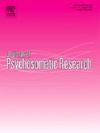Recurrent pain in older age: A cross-sectional network analysis of biopsychosocial-existential interactions
IF 3.5
2区 医学
Q2 PSYCHIATRY
引用次数: 0
Abstract
Objective
Chronic pain is a prevalent condition in older adults, associated with substantial distress. For many older people, chronic pain interferes with their daily life which is reflected in various life domains. This study aimed to investigate whether interactions among self-reported indicators of biological, psychological, social, and existential life domains differ for older adults with no pain, with non-interfering pain, and with interfering pain.
Method
The study was based on the cross-sectional 65+ and Safe Study data (N = 622; age range 64–106 years; 60.6 % women). Network analysis was used to assess the inter-variable associations for older adults reporting no pain, non-interfering pain, and interfering pain separately. Network visualization and centrality tests were performed. Permutation-based analyses were conducted to investigate the connections among variables in three subgroups.
Results
We identified a structural difference between the networks of older adults with no pain and interfering pain, suggesting differences in connectivity among the life domains. The strength centrality metrics showed the central role of presence of meaning in the networks of older adults with no pain and with non-interfering pain, while for older adults with interfering pain, anxiety appeared to be dominant.
Conclusion
The findings illuminated that anxiety regulation and meaning-enhancement are potentially important intervention targets for older adults with recurrent pain. Overall, the study highlighted the value of a holistic biopsychosocial-existential approach for understanding and managing pain in older adults.
老年复发性疼痛:生物-心理-社会-存在相互作用的横断面网络分析。
目的:慢性疼痛是老年人的一种普遍状况,与实质性的痛苦有关。对于许多老年人来说,慢性疼痛干扰了他们的日常生活,这反映在各个生活领域。本研究旨在探讨在无疼痛、非干扰性疼痛和干扰性疼痛的老年人中,自我报告的生物、心理、社会和存在生活领域指标之间的相互作用是否存在差异。方法:本研究基于65+和Safe study的横断面数据(N = 622;年龄64-106岁;60.6%为女性)。网络分析分别用于评估老年人报告无疼痛、非干扰性疼痛和干扰性疼痛的变量间关联。进行网络可视化和中心性测试。在三个亚组中进行了基于排列的分析,以调查变量之间的联系。结果:我们确定了无疼痛和干扰性疼痛的老年人网络之间的结构差异,表明生活域之间的连通性存在差异。强度中心性指标显示,在无疼痛和非干扰性疼痛的老年人中,意义的存在在网络中起中心作用,而在有干扰性疼痛的老年人中,焦虑似乎占主导地位。结论:研究结果表明,焦虑调节和意义增强是老年人复发性疼痛的潜在重要干预目标。总的来说,该研究强调了整体生物心理社会存在主义方法对理解和管理老年人疼痛的价值。
本文章由计算机程序翻译,如有差异,请以英文原文为准。
求助全文
约1分钟内获得全文
求助全文
来源期刊
CiteScore
7.40
自引率
6.40%
发文量
314
审稿时长
6.2 weeks
期刊介绍:
The Journal of Psychosomatic Research is a multidisciplinary research journal covering all aspects of the relationships between psychology and medicine. The scope is broad and ranges from basic human biological and psychological research to evaluations of treatment and services. Papers will normally be concerned with illness or patients rather than studies of healthy populations. Studies concerning special populations, such as the elderly and children and adolescents, are welcome. In addition to peer-reviewed original papers, the journal publishes editorials, reviews, and other papers related to the journal''s aims.

 求助内容:
求助内容: 应助结果提醒方式:
应助结果提醒方式:


